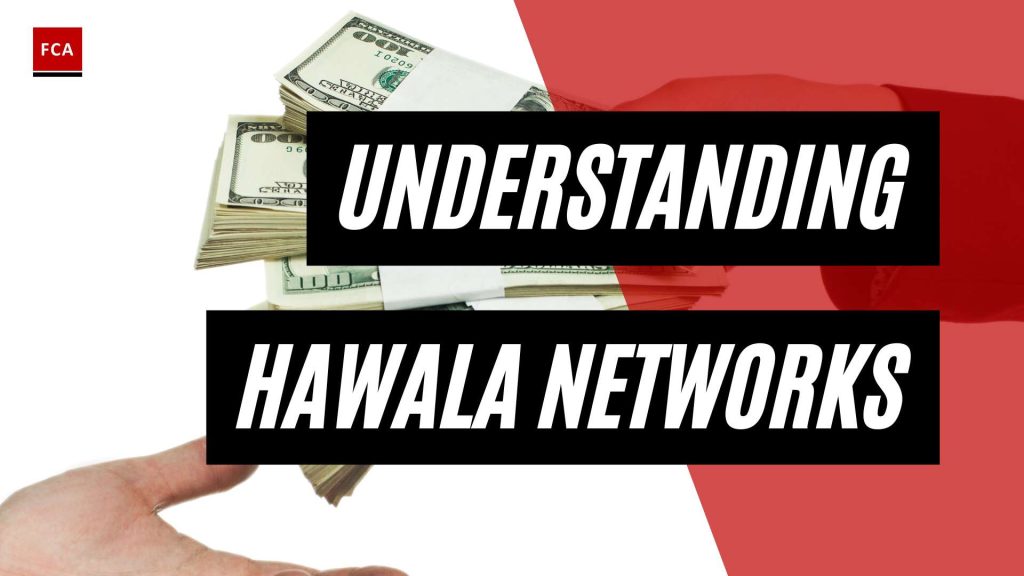Understanding Hawala Networks
In the realm of global finance, the existence of informal channels of money transfer, such as hawala networks, presents both unique benefits and challenges. Understanding the origins and functioning of these systems can help in devising strategies to mitigate the risks associated with them.
Origins and Evolution of Hawala
The hawala system, also known as hundi or fei ch’ien, is believed to have originated in India in the eighth century as a system to protect traders against theft. It quickly became an integral part of South Asia’s culture and history, with nearly £258.9 billion passing through the network every year.
The origins of hawala networks can be traced back to the Islamic world but have since expanded globally, with operations in regions such as South Asia, the Middle East, and Africa (Investopedia). These networks are prevalent in these regions due to various reasons, including distrust in the banking sector, lack of accessibility to formal financial institutions, and cultural norms promoting privacy and confidentiality (Pideeco).
Functioning of Hawala Systems
The hawala system is an informal method of transferring funds from one geographic location to another, operating outside of traditional banking systems. It is based on trust between the parties involved and is facilitated by a network of hawala brokers, who accept money in one location and then notify associates in another location to disburse the funds to the intended recipient (Investopedia).
Hawala transfers are fast, cheap, and informal, making it an appealing option for people in countries with a more robust banking system. Immigrant workers who support their families back home often find the system to be an efficient and easy solution.
However, the lack of regulation and oversight in hawala transactions presents challenges to law enforcement authorities in combating money laundering and terrorist financing activities. As these transactions operate outside the traditional banking system and are difficult to trace, they have, in some cases, been linked to illicit activities such as drug trafficking, arms smuggling, and terrorist financing.
The next sections will delve deeper into the role of hawala networks in global remittances, the regulatory challenges they pose, their use in illicit activities, and potential strategies for their regulation.
Hawala’s Role in Global Remittances
The hawala system has played a significant role in global remittances, especially in regions where formal banking infrastructures are less accessible or trusted. This section explores the advantages of hawala transactions and the regions predominantly using hawala.
Advantages of Hawala Transactions
Hawala transfers offer several advantages over traditional banking systems, making them an appealing option for many individuals. First, they are typically faster and cheaper, providing an efficient means of transferring funds across borders. This efficiency, coupled with the system’s informality, makes it a favored choice among migrant workers sending remittances back home. The hawala system offers these workers an easy and affordable solution for supporting their families from afar.
However, it’s important to note that while the majority of hawala transactions are legitimate, the system’s lack of regulations and the anonymity it offers can, at times, facilitate illicit activities such as money laundering or terrorist financing.
Regions Predominantly Using Hawala
Hawala networks are prevalent in various regions across the globe, including South Asia, Africa, and the Middle East. These regions have a high usage rate of hawala due to several factors. These include a lack of trust in the formal banking sector, limited accessibility to financial institutions, and cultural norms that value privacy and confidentiality.
The hawala system is believed to have originated in India in the eighth century and has since become an integral part of the region’s culture and history. Today, it is estimated that nearly £258.9 billion passes through the hawala network every year (Dow Jones).
Understanding the role of hawala in global remittances is crucial for professionals in compliance, risk management, and anti-financial crime. By comprehending the intricacies of hawala transactions, these professionals can better navigate the challenges posed by such informal value transfer systems and work towards effective regulation and monitoring.
Regulatory Challenges with Hawala
Hawala networks, part of a broader category known as informal value transfer systems, present unique challenges for regulatory authorities due to their opaque operational structures. Let’s delve into the two main regulatory difficulties: the lack of transparency in hawala transactions and the difficulties in monitoring these transactions.
Lack of Transparency in Hawala
One of the major challenges of regulating hawala networks is their lack of transparency. Hawala transactions, often conducted between trusted hawala brokers, typically do not involve the exchange of formal documentation or the creation of a comprehensive paper trail. This lack of documentation significantly hinders the ability of law enforcement and regulatory agencies to detect and prevent illicit activities such as money laundering and terrorist financing.
This absence of transparency is not a flaw but rather a characteristic of the hawala system, designed to ensure swift and efficient transactions. However, this feature also makes these networks attractive for individuals or entities looking to move funds discreetly across borders, further complicating the task of authorities in monitoring and regulating these systems.
Difficulties in Monitoring Hawala Transactions
In addition to the lack of transparency, the decentralized and informal nature of hawala networks makes it difficult for authorities to effectively monitor transactions. Unlike formal financial institutions, hawala brokers are not subject to the same regulatory scrutiny, which allows them to operate under the radar of regulatory bodies.
Further, the reliance on trust and personal relationships within hawala networks makes it difficult for outsiders, including regulators and law enforcement, to penetrate these systems. Often, the only tangible evidence of a hawala transaction is the receipt given to the customer, which contains minimal information and is often discarded after the transaction is completed.
In conclusion, the lack of transparency and the difficulties in monitoring transactions pose significant challenges for authorities attempting to regulate hawala networks. These challenges underscore the need for enhanced international cooperation and innovative strategies to promote transparency in hawala transactions and other alternative remittance systems.
Hawala and Illicit Activities
Despite its advantageous role in global remittances, the informal nature of hawala networks can be exploited for illicit activities. These include money laundering and financing of terrorist activities.
Use of Hawala in Money Laundering
Hawala networks are often used for money laundering due to the lack of a clear paper trail, making it difficult for law enforcement agencies to track transactions. This lack of transparency poses a challenge for law enforcement and regulatory agencies to detect and prevent money laundering activities.
The Hawala money transfer system, though often used by migrant workers for sending remittances, can also be exploited to move funds linked to criminal activities such as drug trafficking, smuggling, kidnapping, customs fraud, tax evasion, and terrorist funding (Dow Jones).
Hawala brokers operate out of small offices, often without maintaining traditional records, further complicating the tracing of transactions. For more information on how hawala is used in money laundering, refer to our article on hawala money laundering.
Hawala and Terrorist Financing
In addition to money laundering, hawala networks can facilitate the movement of money across borders without detection by authorities, making it a potential channel for terrorist financing. The anonymity and speed of hawala transactions make it an attractive option for those wishing to finance illicit activities without attracting attention.
While the majority of hawala transactions are likely to be legitimate, the potential for misuse is a cause for concern among law enforcement and regulatory bodies. Addressing this risk requires a nuanced understanding of hawala networks, as well as robust international cooperation and effective regulation.
The complexities of hawala networks and other informal value transfer systems such as fei ch’ien and the hundi system present unique challenges for those seeking to prevent illicit activities. Understanding these systems is a vital first step in developing effective strategies to counter these activities.
Strategies for Regulating Hawala
Given the complexity and widespread use of hawala networks, it’s important to explore strategies for their regulation. Enhancing international cooperation and promoting transparency in hawala transactions are two key strategies discussed in this section.
Enhancing International Cooperation
Efforts are being made globally to enhance the regulation and supervision of hawala networks to mitigate risks associated with informal remittance systems. The goal is to ensure compliance with anti-money laundering and counter-terrorism financing measures.
A key aspect of this strategy is fostering cooperation between authorities in different jurisdictions. This collaboration can help monitor and combat the potential misuse of these informal value transfer systems, which have sometimes been linked to illicit activities such as drug trafficking, arms smuggling, and terrorist financing (Pideeco).
To this end, international bodies such as the Financial Action Task Force (FATF) provide guidelines to countries on combating money laundering and terrorist financing, and they encourage nations to work together to regulate and supervise hawala networks and other alternative remittance systems.
Promoting Transparency in Hawala Transactions
Promoting transparency is another key strategy in regulating hawala networks. The lack of regulation and oversight in hawala transactions presents challenges to law enforcement authorities in combating money laundering and terrorist financing activities. These transactions operate outside the traditional banking system and are difficult to trace.
Efforts to mitigate these risks focus on enhancing transparency and improving regulatory oversight. However, the lack of a centralized authority overseeing hawala transactions makes it challenging for regulators to monitor and control the movement of funds through this system. This decentralization can also make it a preferred method for illicit actors seeking to avoid detection (IMF).
To foster transparency, one possible approach is to encourage hawala brokers to maintain detailed records of their transactions. These records could include information about the sender, receiver, amount transferred, and purpose of the transaction. Implementing such measures could go a long way in enhancing the oversight of hawala networks and combating illicit activities, such as hawala money laundering.
In conclusion, while regulating hawala networks presents a unique set of challenges, strategies centered on enhancing international cooperation and promoting transparency can play a significant role in mitigating the risks associated with these systems. As the global financial landscape continues to evolve, it will be important for regulators and policymakers to continue to adapt and refine these strategies to ensure the integrity and security of the global remittance system.








